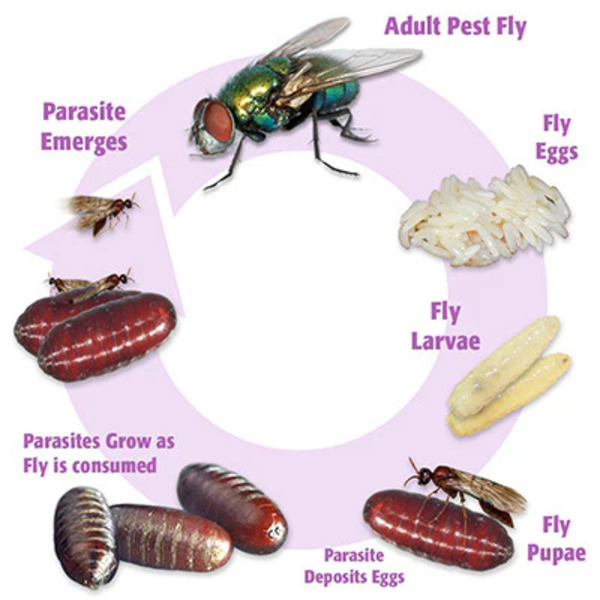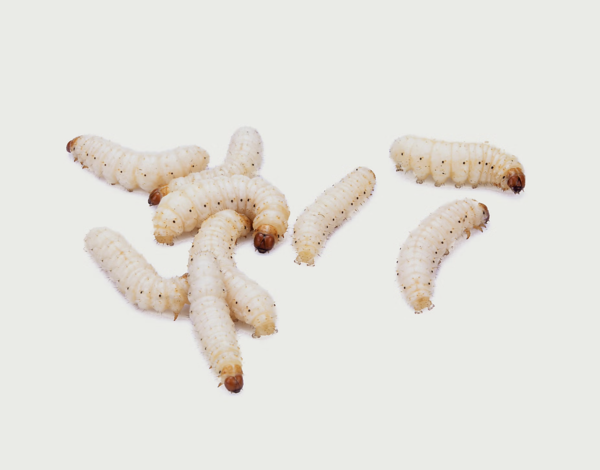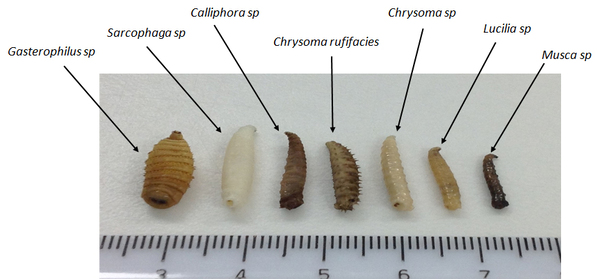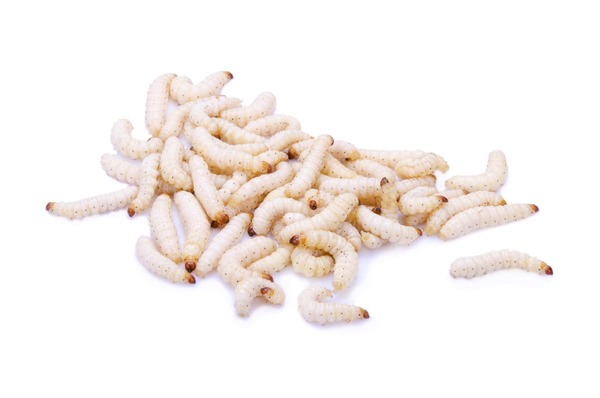Maggots are the larval stage of flies, and they often evoke a strong reaction from people. But how are maggots made? This article will explore the fascinating life cycle of flies, how maggots develop, and their roles in nature, all while keeping it easy to understand.

Maggots are the young, worm-like larvae of certain types of flies, especially the common housefly and blowflies. They are typically white or cream-colored and can range in size from a few millimeters to over an inch long. Maggots are known for their scavenging behavior, often found in decaying organic matter.
Maggots are the larval stage of flies, particularly those from the families of houseflies and blowflies. Their appearance can be alarming, but understanding what causes maggots to appear can help prevent infestations. This article will explore the factors that lead to maggot infestations and how to mitigate them.
Maggots originate from fly eggs, which are laid in specific conditions. Several factors create an environment that attracts flies:
A. Decaying Organic Matter
Food Sources: Flies are drawn to decaying food, garbage, and organic waste. Common sources include:
Leftover food, especially meat and dairy products
Compost heaps that are not well managed
Animal carcasses or feces
Moisture: Decaying matter often provides the moisture flies need to thrive, making it an ideal spot for laying eggs.
B. Warm Temperatures
Optimal Conditions: Flies reproduce more quickly in warm temperatures. Environments above 70°F (21°C) encourage faster egg hatching and larval growth.
Seasonal Factors: Warmer months often see increased fly activity, leading to a higher likelihood of maggot infestations.
Inadequate cleaning and waste management practices can lead to conditions that favor fly infestations:
A. Improper Food Storage
Uncovered Food: Leaving food uncovered or not stored properly can attract flies.
Food Spills: Not cleaning up spills promptly creates a breeding ground for flies.
B. Cluttered Areas
Debris and Waste: Clutter, such as piles of old newspapers or cardboard, can trap moisture and organic matter, attracting flies.
Overflowing Trash: Trash cans that are not emptied regularly can become a haven for flies.
Areas where pets or livestock are kept can also be prone to maggot infestations:
A. Feces:
Attracts Flies: Animal droppings are a prime location for flies to lay their eggs.
Decomposition: The decomposition of animal waste provides nutrients for maggots.
B. Carcasses:
Dead Animals: The presence of dead animals on properties, such as roadkill or deceased pets, can lead to rapid maggot development.
Standing water or poorly drained areas can attract flies:
Stagnant Water: Areas with stagnant water create a suitable environment for flies, which often lay eggs near moisture.
Blocked Drains: Clogged drains can harbor organic debris, providing food sources for flies.
If you notice any of the following signs, it may indicate a maggot infestation:
Flies: Increased fly activity, particularly in and around your home.
Unpleasant Odors: A foul smell often accompanies decaying organic matter, which can signal the presence of maggots.
Visible Maggots: Sightings of small, white or cream-colored larvae indicate a clear infestation.
Preventing maggot infestations requires proactive measures:
A. Sanitation Practices
Regular Cleaning: Keep kitchen and dining areas clean. Promptly clean up food spills and waste.
Proper Food Storage: Store food in airtight containers and refrigerate leftovers.
B. Waste Management
Sealed Trash: Use trash cans with tight-fitting lids and empty them regularly.
Composting: Manage compost heaps properly to minimize odors and attractants.
C. Animal Care
Clean Up After Pets: Regularly dispose of pet waste in a timely manner.
Animal Carcasses: Properly dispose of any deceased animals on your property.
D. Drainage Management
Fix Drainage Issues: Ensure proper drainage around your home to eliminate standing water
Maggots are caused by the presence of flies, which lay their eggs in decaying organic matter, food waste, and animal waste. Poor sanitation practices, warm temperatures, and cluttered areas create ideal conditions for maggot infestations. By understanding these causes and implementing preventive measures, you can significantly reduce the likelihood of encountering maggots in your home or surroundings. Regular cleaning, proper waste management, and vigilance can help keep your environment maggot-free.

The life cycle of flies consists of four main stages: egg, larva (maggot), pupa, and adult fly.
Laying Eggs: Adult female flies lay hundreds of eggs in a suitable environment. This usually includes decaying food, feces, or other organic materials that provide nourishment for the developing larvae.
Hatching: The eggs typically hatch within 24 hours, depending on environmental conditions like temperature and humidity.
Feeding: Once hatched, maggots begin to feed on the organic material around them. They have a strong digestive system that helps them break down and consume decaying matter.
Growth: Maggots grow quickly, molting several times before they reach their full size. This growth phase can last anywhere from a few days to a couple of weeks, depending on the species and environmental conditions.
Transformation: After reaching maturity, maggots seek a safe, dry place to pupate. During this stage, they undergo metamorphosis, transforming into adult flies.
Duration: The pupal stage can last from a few days to several weeks, again depending on environmental factors.
Emergence: Once the transformation is complete, the adult fly emerges from the pupal casing. It will take a short time for its wings to expand and dry before it can fly away.
Reproduction: Adult flies typically live for several weeks, during which they will mate and lay eggs, continuing the cycle.

Maggots themselves are not inherently harmful to humans, but their presence can indicate unsanitary conditions. Here are some points to consider regarding maggots and potential risks:
Infection: While maggots do not bite or sting, they can be associated with decaying organic matter, which can harbor harmful bacteria. If they infest wounds (a condition known as myiasis), they can introduce bacteria and lead to infections.
Allergic Reactions: Some people may have allergic reactions to maggots or their byproducts, which can cause skin irritation or respiratory issues.
Definition: Myiasis occurs when maggots infest living tissue, usually in open wounds or sores. This is more common in animals but can occur in humans, especially in those with compromised immune systems or poor hygiene.
Symptoms: Symptoms may include pain, swelling, and a foul odor from the affected area. Medical treatment is usually required to remove the maggots and clean the wound.
Contaminated Food: If maggots are found in food, it often indicates that the food is spoiled or contaminated. Consuming contaminated food can lead to foodborne illnesses.
Indication of Poor Hygiene: The presence of maggots often signifies unsanitary conditions, such as improper food storage or inadequate waste disposal. This can lead to more serious health issues if not addressed
While maggots themselves are not dangerous to healthy individuals, they can be associated with unsanitary conditions and infections, particularly if they infest wounds. It's important to maintain proper hygiene and sanitation practices to prevent infestations and protect against potential health risks. If you encounter maggots in food or wounds, it’s best to consult a healthcare professional or take appropriate cleaning measures.
Maggots play an important role in the ecosystem:
Decomposers: They help break down and recycle nutrients from decaying organic matter, aiding in the decomposition process.
Food Source: Maggots serve as a food source for various animals, including birds, rodents, and other insects.
Medical Uses: In medicine, certain species of maggots are used in maggot therapy to clean wounds, promoting healing by removing dead tissue.

While maggots are often found in decaying material, they play a crucial role in nature by helping to decompose organic waste. They are not inherently dirty; rather, they thrive in environments that might be unclean to humans.
Maggots themselves are not dangerous to healthy humans. However, the presence of maggots can indicate unsanitary conditions that may pose health risks.
If you encounter maggots in your home or yard, here are some steps to manage them:
Clean Up: Remove any decaying organic material or food sources.
Disposal: Use a vacuum or a sealed container to dispose of the maggots.
Preventative Measures: Keep food stored properly, and maintain cleanliness to prevent future infestations.
Maggots are an essential part of the natural cycle of decomposition. Understanding how maggots are made and their life cycle can help alleviate fears and misconceptions about these fascinating creatures. By recognizing their role in the ecosystem, we can appreciate the important work they do in recycling nutrients and maintaining the balance of nature. If you encounter maggots, remember that they are simply part of the circle of life, transforming decay into new life.

To kill maggots immediately, you can use several effective methods. Here are some common approaches:
How it Works: Pouring boiling water directly onto maggots will kill them almost instantly due to the high temperature.
Application: This method is effective for cleaning up infestations in food or trash.
How it Works: Salt dehydrates and kills maggots by drawing moisture out of their bodies.
Application: Sprinkle salt directly on the maggots or the area where they are present.
How it Works: The acidity in vinegar can kill maggots on contact.
Application: Spray a mixture of vinegar and water directly onto the maggots.
How it Works: Commercial insecticides specifically designed to kill larvae or maggots can be effective.
Application: Follow the manufacturer's instructions for safe use, ensuring it is suitable for the environment where the maggots are found.
How it Works: This natural powder can kill maggots by dehydrating them. It’s safe for use around pets and humans.
Application: Sprinkle diatomaceous earth around the infested area.
How it Works: A solution of bleach and water can kill maggots, but it can also be harmful to the environment and surfaces.
Application: Use cautiously and ensure proper ventilation.
How it Works: A solution of hydrogen peroxide can kill maggots on contact.
Application: Spray it directly onto the maggots.
While these methods are effective at killing maggots immediately, it’s essential to address the underlying causes of the infestation to prevent future occurrences. Clean up any organic matter, maintain proper sanitation, and ensure food is stored correctly.

Maggot therapy, also known as maggot debridement therapy (MDT), is a medical treatment that uses live maggots to help heal wounds. Here’s an overview of how it works, its benefits, and considerations:
Maggot therapy involves the application of sterile larvae of certain fly species (usually the green bottle fly, Lucilia sericata) to non-healing wounds. The maggots consume necrotic (dead) tissue, bacteria, and debris while promoting the healing process.
Debridement: Maggots feed on dead tissue, effectively cleaning the wound. This process is called debridement and helps prepare the wound for healing.
Bacterial Reduction: The enzymes produced by maggots can kill bacteria, reducing the risk of infection in the wound.
Promotion of Healing: Maggots stimulate the growth of new tissue and blood vessels, promoting faster healing.
Pain Relief: Some studies suggest that maggot therapy can reduce pain in chronic wounds.

Maggot therapy is typically used for:
Chronic, non-healing wounds (e.g., diabetic ulcers, pressure ulcers)
Burns
Surgical wounds with necrotic tissue
Infected wounds where traditional treatments have failed
Effective Debridement: It is a reliable method for removing dead tissue, often more effective than surgical debridement.
Reduced Need for Antibiotics: By decreasing bacterial load, it may reduce the need for antibiotics.
Cost-Effective: In some cases, it can be less expensive than other forms of treatment.
Natural Healing: It promotes the body's natural healing processes without the need for more invasive procedures.
Medical Supervision: Maggot therapy should be performed under medical supervision to ensure safety and effectiveness.
Potential Discomfort: Some patients may experience discomfort or aversion to the idea of using live insects.
Allergic Reactions: Although rare, some individuals may have allergic reactions to the enzymes produced by the maggots.
Maggot therapy is a unique and effective treatment option for specific types of wounds, particularly when traditional methods have not worked. Its ability to promote healing and reduce infection makes it a valuable tool in wound care. If you or someone you know is considering this treatment, it's essential to consult with a healthcare professional to discuss its potential benefits and risks.
animal tags: Maggot
We created this article in conjunction with AI technology, then made sure it was fact-checked and edited by a Animals Top editor.